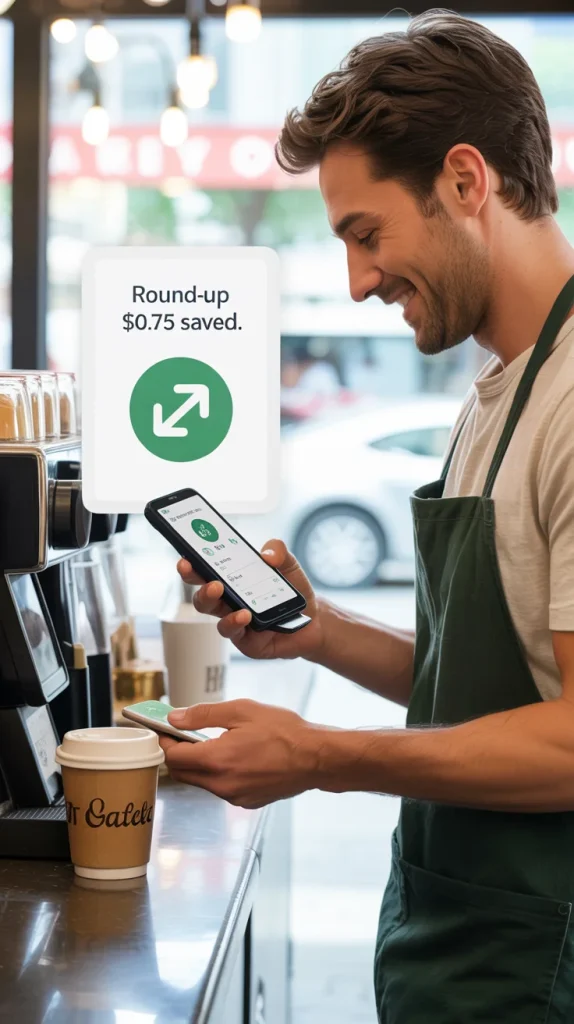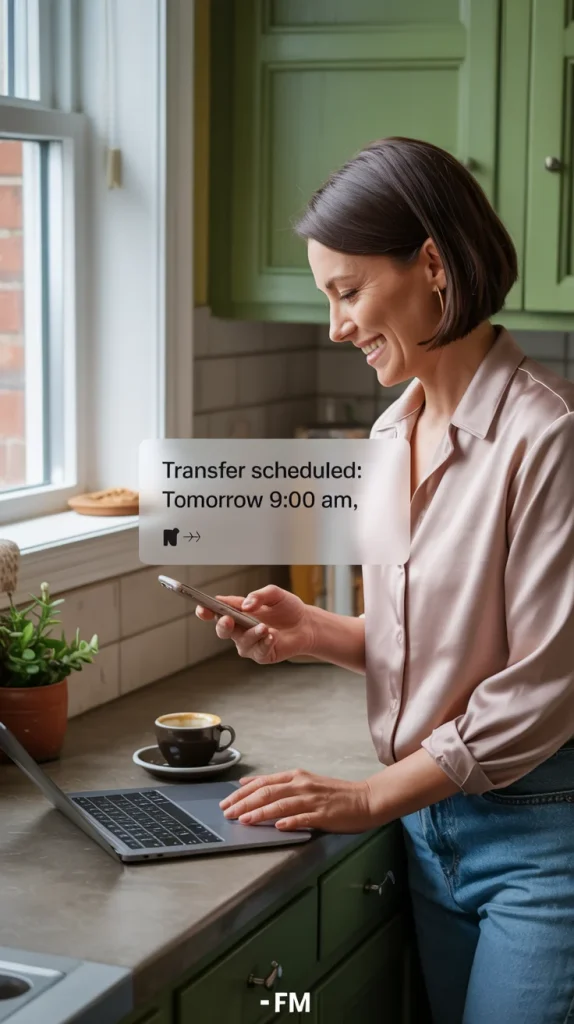The Coffee Shop Reality Check That Changed Everything

Picture this: I’m sitting at my home office desk, wrapped in my favorite blanket during a chilly February morning, reviewing my monthly expenses. As a remote worker, I’d convinced myself that working from home was already saving me tons of money.
Then I saw it – my credit card statement showed I’d spent $347 at various coffee shops and food delivery apps in just one month.
That alarming number accounted for nearly 12% of my take-home pay, making it clear how my small, seemingly innocent purchases were draining my budget.
That’s when the reality hit me like a cold shower. Despite working from home, I was hemorrhaging money on what added up to the equivalent of a car payment.
Quick takeaway: Small daily expenses can secretly drain thousands from your budget each year.
The journey to transform my financial habits started that morning, and what I discovered through years of research and professional analysis surprised me.
The most effective money-saving strategies aren’t about extreme frugality or giving up everything you enjoy. Imagine being able to trim $200 from your expenses in just 30 days—without sacrificing comfort or fun. That’s the power of adopting strategic, manageable habits.
They’re about tiny, almost effortless habits that compound into massive results over time.
🎬 Prefer to watch? Check out our quick video summary!
9 Game-Changing Money Saving Tips That Take Minutes
1. The 24-Hour Rule for Online Shopping

This simple trick has saved me thousands over the years. Whenever you want to buy something online, add it to your cart, but hold off for 24 hours before completing the purchase.
By waiting, you’re protecting tomorrow-you from losing future freedom. This awareness can help you avoid potential regret from impulsive spending, giving you more control over your financial decisions.
Set a phone reminder if needed. You’ll be amazed how often that “must-have” item loses its appeal overnight.
Pro tip: Make a separate email account just for shopping sites to avoid temptation from promotional emails in your main inbox. Setting this up is simple: use a free email service and choose a username that’s easy to remember but distinct from your main address. Alternatively, set filters in your existing account by creating a specific label for shopping emails and automatically directing them into a separate folder. This way, you keep temptation out of sight while organizing your inbox efficiently.
2. The Round-Up Revolution

Many banks now offer automatic round-up programs that turn spare change into savings. Every purchase gets rounded to the nearest dollar, with the difference transferred to savings.
Buy a $3.25 latte? Twenty-five cents goes straight to savings. These micro-transfers feel painless but can add up to hundreds annually.
3. The Sunday Meal Prep Money Saver

Spending two hours on Sunday preparing meals for the week isn’t just about health – it’s a financial game-changer. When you have ready-made meals waiting, those expensive DoorDash orders lose their appeal.
My research into consumer spending patterns shows that meal prep can slash food expenses by 40-60%.
For example, let’s consider the average cost of a home-cooked meal versus ordering from a food delivery service. Preparing a meal at home might cost around $5 per serving when you purchase groceries in bulk and utilize sales. In contrast, the same meal ordered through a delivery app may range from $10 to $15 per serving. This comparison highlights why meal prep could save a household $200-400 monthly, offering substantial savings over the long term.
4. The Subscription Audit Habit

Set a monthly reminder to review all your subscriptions. That streaming service you haven’t used in months? Cancel it.
The gym membership gathering dust? Gone. Most people discover they’re paying for 3-5 subscriptions they’ve forgotten about.
Try this: Use your bank’s search function to find all recurring charges, then ruthlessly eliminate anything you haven’t used in 30 days.
5. The Gas Price App Routine

Before filling up, spend 30 seconds checking gas price comparison apps. The price difference between stations can be shocking – sometimes 20-30 cents per gallon.
For a 15-gallon tank, that’s $3-4.50 saved per fill-up. Do this twice monthly, and you’re looking at nearly $100 in annual savings.
6. The Water Bottle Investment

Carrying a reusable water bottle everywhere might seem insignificant, but the math is compelling. Skip just one $2 bottled water purchase daily, and you save $730 annually.
Plus, you’ll naturally avoid expensive drinks when you’re already hydrated. Choose a quality insulated bottle that keeps drinks cold for hours – it’s worth every penny.
7. The Bill Negotiation Calendar

Mark your calendar quarterly to call service providers and negotiate bills. Cable, internet, insurance, and phone companies often have retention deals they’ll offer if you threaten to switch.
A 10-minute call can slash $20-50 off monthly bills. That’s $240-600 yearly from just one successful negotiation.
8. The Cash Envelope Trick

For discretionary spending categories like entertainment or dining out, use physical cash in labeled envelopes. When the envelope’s empty, that category is done for the month.
This tangible system makes overspending nearly impossible. Digital payments feel abstract, but handing over actual bills creates immediate awareness of spending.
9. The Automated Savings Transfer

Schedule automatic transfers from checking to savings the day after each paycheck hits. Start with just $25 if that’s all you can manage.
The key is making it automatic and immediate. Consider savings like a bill that must be paid first, not an afterthought with leftover money.
Quick takeaway: Automation removes the temptation to skip saving “just this once” and builds wealth without willpower.
How Small Changes Create Big Financial Wins
Let’s understand why tiny habits work so effectively for saving money. Through my decade of studying consumer behavior, I’ve observed that dramatic lifestyle changes rarely stick.
Research supports this observation, with studies indicating that it takes an average of 66 days for a new habit to become automatic. This suggests that small, incremental changes are more successful in becoming long-lasting habits, reinforcing trust in the power of tiny habits.
When we try to overhaul our entire financial life overnight, we often burn out within weeks. But small, manageable adjustments? Those become automatic behaviors that transform our finances without constant willpower.
Think about brushing your teeth – you don’t debate whether to do it each morning. It’s just part of your routine.
The same principle applies to money-saving habits. Once they become automatic, they require zero mental energy while continuously improving your financial health.
What Are the Most Common Money Saving Mistakes?
Through years of analyzing financial behaviors, I’ve identified several mistakes that derail even the best intentions.
The biggest culprit? Going too extreme too fast.
Which of these mistakes rings true for you?
This might prompt self-diagnosis and deeper reflection, empowering you to personalize the upcoming guidance. When people try to cut every expense simultaneously, they create an unsustainable situation that inevitably leads to binge spending.
Another common error is focusing solely on cutting costs without considering value. Buying the cheapest option often means replacing items more frequently, costing more long-term.
Quality matters for certain purchases – a well-made pair of shoes lasting three years beats buying cheap ones every six months.
The “all or nothing” mentality also trips people up. Missing one savings goal doesn’t mean abandoning the entire plan.
Progress beats perfection every time. Small, consistent actions compound into significant results over months and years.
How Do You Maintain Money Saving Motivation Long-Term?
Sustaining money-saving habits requires more than initial enthusiasm. The secret lies in making progress visible and celebrating small wins.
Before moving on, take a moment to set up a real-time savings tracker—either through a banking app or a basic spreadsheet on your computer. Seeing your savings grow in real-time can greatly increase motivation and commitment.
Consider using popular apps like Mint or YNAB, which offer user-friendly interfaces and detailed insights into your spending patterns, to help you keep track effortlessly.
Track your savings growth monthly—seeing that number climb provides powerful motivation. Create a simple spreadsheet or use a banking app that shows your progress over time.
Build in rewards that don’t break the bank. Save $500? Treat yourself to a nice dinner out (budgeted, of course).
Hit $1,000? Maybe it’s time for that weekend camping trip you’ve been planning. These milestones make the journey enjoyable rather than feeling like endless deprivation.
Try this: Create a visual savings thermometer on your fridge, coloring in progress toward your goal. This old-school technique works because you see it daily.
Connect your savings to specific goals rather than vague concepts. “Saving money” feels abstract, but “saving for that epic Yellowstone road trip” creates emotional investment.
Whether it’s a dream vacation, home down payment, or emergency fund, tangible goals provide purpose.
Smart Shopping Strategies That Slash Spending
The difference between random shopping and strategic purchasing can save thousands annually. Start with the basics: never shop hungry, angry, or bored.
Picture this: It’s a lazy Saturday afternoon, and I find myself scrolling through an online store, vaguely browsing with no particular item in mind. Before I know it, I click ‘buy’ on a gadget I didn’t even know existed an hour ago. This ‘bored scroll to buy’ moment hits me later when the package arrives, reminding me of an impulsive purchase that sat more on whimsy than necessity.
These emotional states lead to impulse purchases you’ll regret later. Create shopping lists and stick to them religiously.
Timing matters tremendously. Black Friday might get the hype, but end-of-season clearances often offer better deals.
Buy winter coats in March, grills in September, and holiday decorations in January. This counterintuitive approach requires planning but delivers massive savings.
Pro tip: Use price tracking browser extensions to monitor items you want and get alerts when prices drop.
Master the art of bulk buying – but only for non-perishables you’ll definitely use. Toilet paper, laundry detergent, and shelf-stable foods make sense in bulk.
That 50-pound bag of quinoa? Only if you’re actually eating quinoa regularly. Storage space and expiration dates matter.
Building Your Personal Money Saving System
Creating a sustainable financial system beats relying on motivation alone.
Start by auditing where your money currently goes, focusing on identifying the largest discretionary spending category each month. Which area do you tend to spend the most on without realizing?
Whether it’s dining out, shopping, or digital subscriptions, choose one category and challenge yourself to cut it by 10% next month. This focused target will feel more manageable and impactful than trying to track every line item.
Use banking apps or simple spreadsheets to track spending for one month without judgment. Just observe the patterns.
Next, identify your personal spending triggers. Maybe it’s stress, boredom, or social pressure.
Ask yourself, “What emotions or situations tend to lead to my impulse purchases?” or “When do I feel most compelled to spend unnecessarily?”
Recognizing these patterns is the first step in creating specific strategies to address them. Stressed? Go for a walk instead of online shopping.
Automate everything possible. Bill payments, savings transfers, and investment contributions should happen without your involvement.
The less you have to think about money management, the more successful you’ll be. Set it up once, then let the system work.
The Psychology Behind Successful Saving
Understanding why we spend helps us save more effectively. Our brains are wired for immediate gratification, making delayed rewards challenging.
Combat this by creating immediate positive feedback for saving. Transfer $50 to savings? Do a victory dance. Seriously – physical celebration reinforces good behaviors.
Reframe saving from deprivation to abundance. Instead of “I can’t afford that,” try “I’m choosing to fund my future.”
By visualizing the possibilities, these savings can bring to life, such as strolling on a white-sand beach under a warm sun or having peace of mind with a well-stocked emergency fund, you create an emotional connection to your financial goals.
This shift from scarcity to empowerment changes everything. You’re not restricting yourself; you’re actively building the life you want.
Quick takeaway: Language matters – how you talk about money internally shapes your financial reality.
Your Money Saving Journey Starts Now
These nine tiny habits might seem almost too simple, but that’s exactly why they work. Grand gestures and extreme measures burn bright and flame out fast.
Sustainable wealth building happens through consistent, manageable actions that compound over time.
Start with just one habit this week. Master it before adding another.
Remember, you’re not just saving money – you’re building a foundation for financial freedom. Every dollar saved is a vote for your future self.
The compound effect of these money saving tips will astound you. That $347 monthly coffee shop bill I discovered? It’s now down to about $40, with the difference funding my emergency fund and investment accounts.
Small changes, massive results.
Stay tuned for more detailed and informative posts like this!






